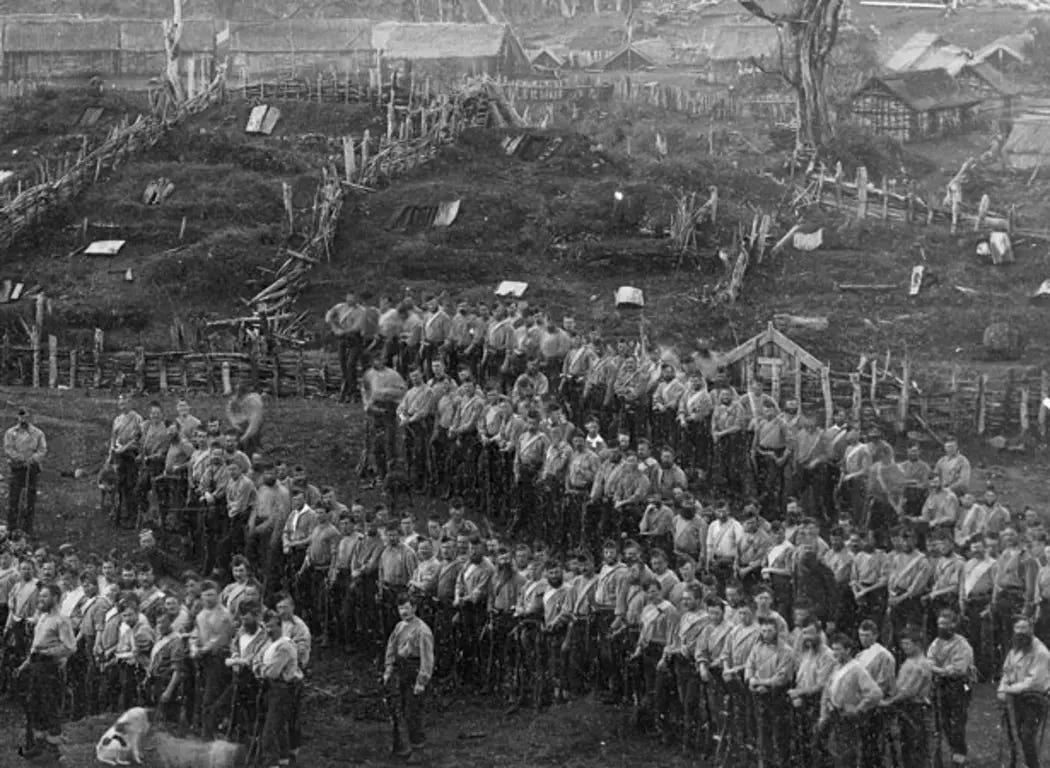On This Day 5 November 1881: The Tragedy at Parihaka
When non‑violence collides with power, lessons from a place that dared to resist and was crushed
In the quiet dawn of 5 November 1881, at the settlement of Parihaka in Taranaki, New Zealand, a march of some 1,500 armed troops advanced upon a community that did not fight back. Rather than the clash of bayonets and war cries, the scene that greeted them was children singing, women baking bread, and men sitting calmly on the ground in peaceful protest.
This was not a battle in the conventional sense. It was something darker, the violent punctuation of colonisation and dispossession, directed at a people who refused to respond in kind. The leaders of Parihaka believed in non-violent resistance. They cultivated the land, welcomed children, and set a white feather in their hair as a symbol of peace. But that did not deter the colonial apparatus. Homes were looted, crops destroyed, and leaders arrested without trial.
As a writer whose mission is to bring old stories into today’s frame, I believe the events at Parihaka demand our attention not just as a distant episode, but as a warning, a mirror held up to the relationship between power and the powerless, between resistance and repression.
Roots of resistance and the politics of land
The story of Parihaka does not begin in November 1881. It is rooted in decades of land confiscations, cultural undermining, and the interplay of indigenous values clashing with colonial ambition.
In the 1870s, a leader emerged, one among others, who preached that land was not an asset to be owned and sold, but a communal stewardship. He urged a response to colonial intrusion not by rifles, but by ploughshares and peaceful occupation. At Parihaka, fences were repaired, land cultivated, and when surveyors arrived, the people simply carried on.
From the colonial perspective, this was subversion. The settlement came to symbolise a kind of threat, not a threat of violence, but of refusal. Refusal to comply, refusal to surrender land, refusal to accept a narrative of European superior and indigenous inferior. For that refusal, the militia marched in. And the lesson was clear, rebellion need not be armed to be crushed, it needs simply to challenge the status quo.
The moment of invasion and its moral aftermath
On the morning of 5 November 1881, the theatre was set. A proclamation had given the residents of Parihaka fourteen days to accept the government’s terms or face the consequences.
When the troops arrived, they were not greeted with hostility. Instead, children sang, women offered bread, the very image of non-violent welcome.
Yet the response was a destruction that has echoed for generations. Leaders were arrested without trial, homes razed, gardens planted over decades dismantled, and people dispersed.
In short, power did not need a battle. It needed the appearance of normal order and audiences approving. The majority of colonial settlers, according to contemporary reporting, supported the action, even though the fundamental injustice was plain.
My core opinion is this, this is not simply a story of injustice, but a demonstration of how non-violence can be interpreted as weakness in the eyes of power, and how peaceful protest may sometimes provoke the sharpest forms of retaliation precisely because it undermines the logic of violence.
Legacy and relevance today
What happened at Parihaka more than a century ago remains relevant today. Why? Because it forces us to ask, is resistance only valid when matched with arms? Or can a principled stand of quiet refusal cut deeper into the moral fabric of society than a riot?
In the decades after the invasion, the Parihaka story was forgotten, downplayed, or spun. Only later did it become a symbol, a symbol of dignity in defeat, of resistance without violence, and of the cost exacted when an authority perceives challenge not in terms of force, but in moral presence.
Today, the white feather of Parihaka has become an emblem of peace, reconciliation, and the possibility that non-violence is not ineffectual. It also warns that such resistance may provoke a reaction harsher than expected, not because it is violent, but because it stands outside the accepted horizon of protest.
For my part, as I write this from a world far removed from 19th-century New Zealand, I see in Parihaka a reflection of contemporary struggles, land rights, indigenous rights, peaceful protest, and state overreach. The question I pose is this, when you stand firm in principle, who defines your act as valid? And what happens when the dominant system cannot handle the challenge of quiet refusal?
Remembering, learning and moving forward
History is not simply a ledger of wrongs. It is a tool for insight. With Parihaka, we must remember not only what was lost, but also what was asserted, dignity, community, and alternative authority. We must learn not only about the tragedy, but about the power of moral clarity.
And moving forward, we must ask ourselves, if non-violent resistance can provoke such force, how must we shape civil society to protect it? How shall we teach future generations that what appears passive may, in fact, be the most active of defiance?
On this day, 5 November, we commemorate not only the destruction of Parihaka, but the resilience of its people, and the challenge they made to the world, that justice is not measured solely by victory in battle, but by the refusal to surrender one’s values.


